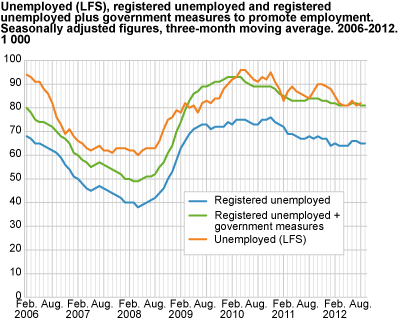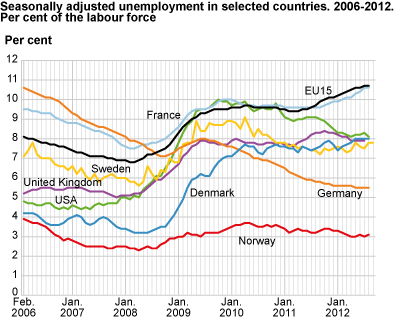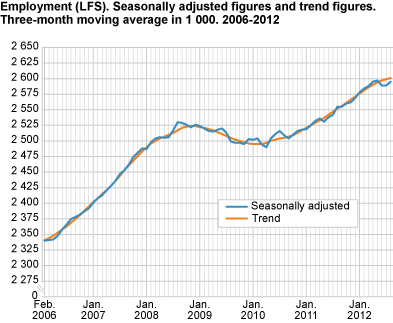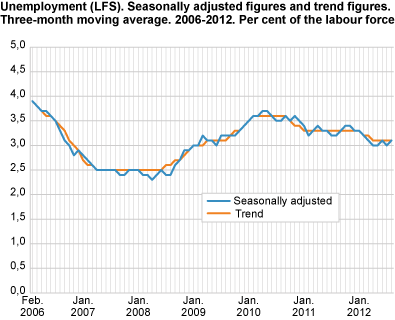Content
Published:
This is an archived release.
No further employment growth
There were only small changes in the number of employed persons from May to August. The small changes in employment observed in the last three months represent a break in the almost two-year long growth in employment.
The Labour Force Survey (LFS) shows that the number of employed persons remained almost unchanged from May (average of April-June) to August (average of July-September). The population increased during the same period, so the employment rate went down from 69.5 per cent in May to 69.2 per cent in August. The employment rate is employed persons as a percentage of the population aged 15-74.
Unemployment at 3.1 per cent
The 3.1 per cent seasonally-adjusted unemployment in August corresponded to 82 000 persons. The increase of 1 000 persons from May is within the LFS error margin. In comparison, the number of people registered as unemployed or on government initiatives to promote employment with the Labour and Welfare Administration (NAV) remained unchanged during the same period.
|
The labour force is the total of employed and unemployed persons between 15 and 74 years of age. From May to August 2012, the LFS showed a decrease in employment of 1 000 persons, while the unemployment increased by 1 000. Therefore, the number of persons in the labour force remained unchanged in this period. Coherence between the conceptsUnemployed + Employed = Labour force Labour force + Outside the labour force = Population |
Unchanged unemployment in neighbouring countries
The unemployment rates in Sweden and Denmark were 7.8 and 8.0 per cent respectively. This was unchanged compared to May. In France, unemployment increased from 10.3 per cent in May to 10.6 per cent in August. In Germany, however, unemployment remained unchanged at 5.5 per cent during the same period. In the EU15, unemployment rose from 10.6 per cent in May to 10.7 per cent in August. Unemployment in the USA decreased from 8.2 per cent to 8.1 per cent during the same period. The international figures refer to seasonally-adjusted data from Eurostat .
Employment and unemployment figures include permanent residentsThe LFS only includes persons who are registered as residents in the population register. Persons working in Norway who are not registered as permanent residents or who are planning to stay for less than six months are not included in the employment figure in the LFS. If these people lose their job it does not count as a fall in employment or a rise in unemployment. In national accounts figures (NR), employed non-residents are included in the employment figure as long as they work in an establishment in Norway. If employment decreases in this group it will count as a fall in employment in NR. Statistics Norway publishes separate figures for all registered non-residents once a year. See short-term immigrants . |
Uncertain figuresThe purpose of making seasonal adjustments is to describe the development over the last year, corrected for seasonal variations. In order to reduce uncertainty, the published series are three-month moving averages of the seasonally-adjusted figures. However, uncertainty means that sampling errors must be considered when interpreting the figures from the LFS. We normally compare the latest non-overlapping three-month periods. An overview of sampling errors in the LFS can be found in “ About the statistics ”, chapter 5, section 3.
The complete time series is re-estimated each month, and this may cause some adjustments of previously published figures. See Revisions for more information . Interviews that arrive late are included in the LFS the following month. This applies to the first two months in each quarter.
Quarterly LFS figures, not seasonally adjusted, are presented in a separate article . |
Tables:
The statistics is published with Labour force survey.
Contact
-
Arbeidsmarked og lønn
E-mail: arbeidsmarked@ssb.no
-
Erik Herstad Horgen
E-mail: erik.horgen@ssb.no
tel.: (+47) 93 08 68 62




